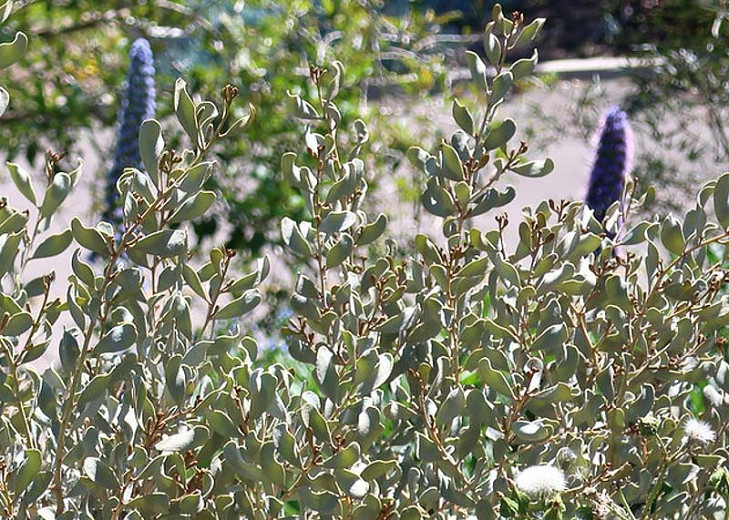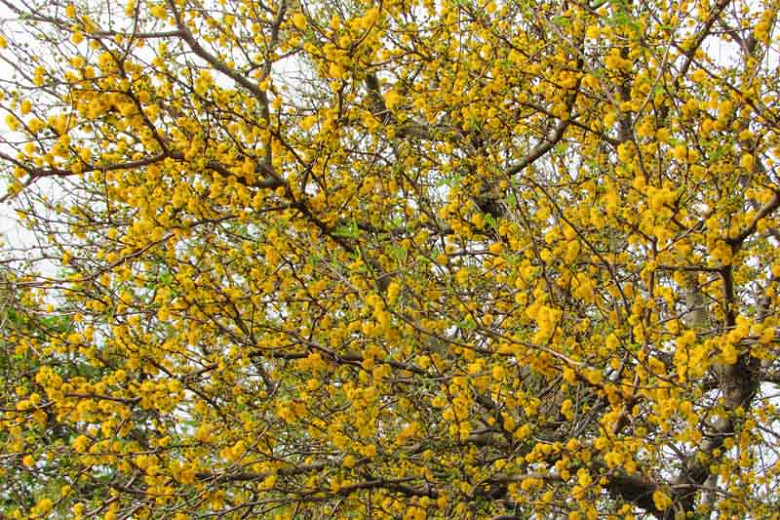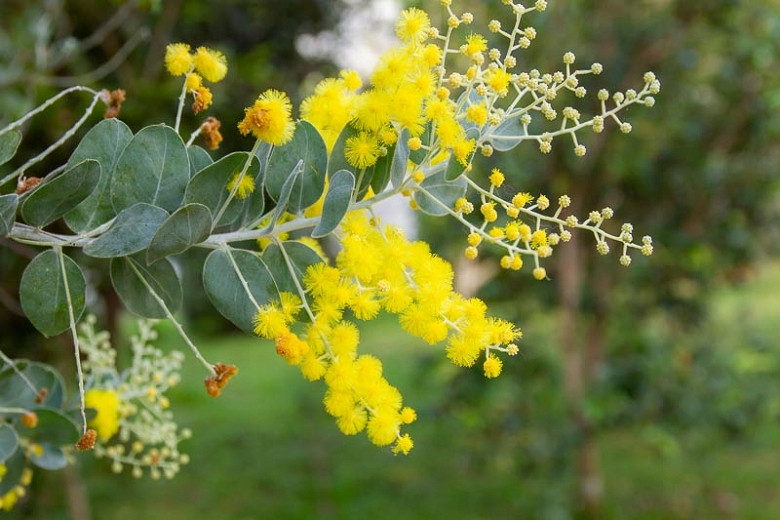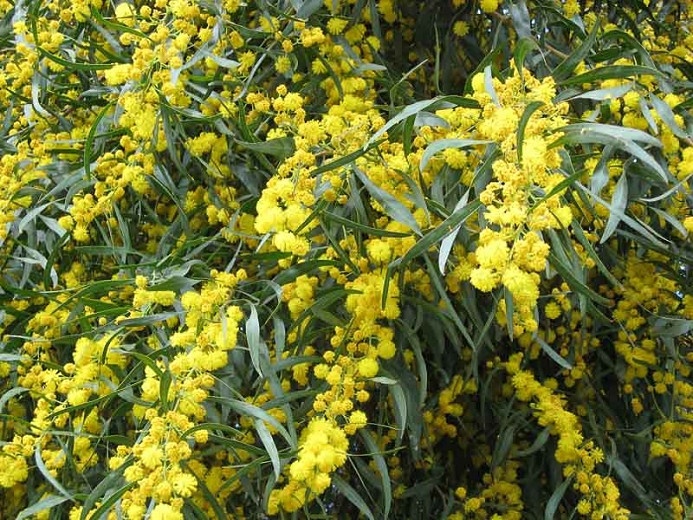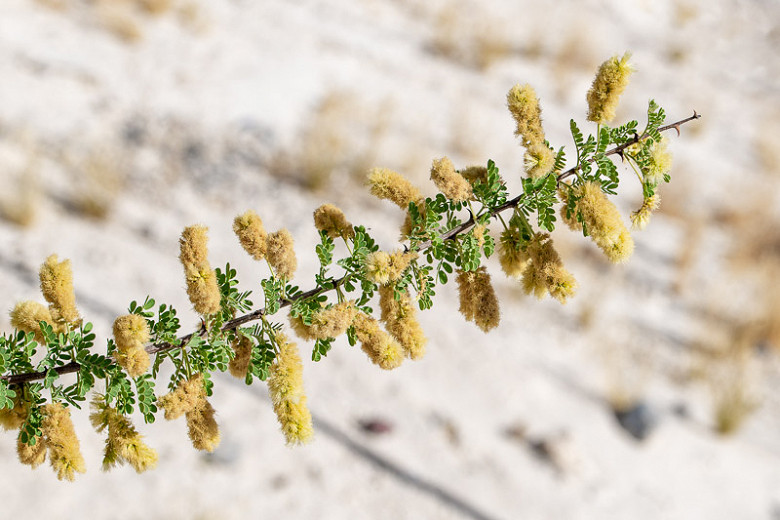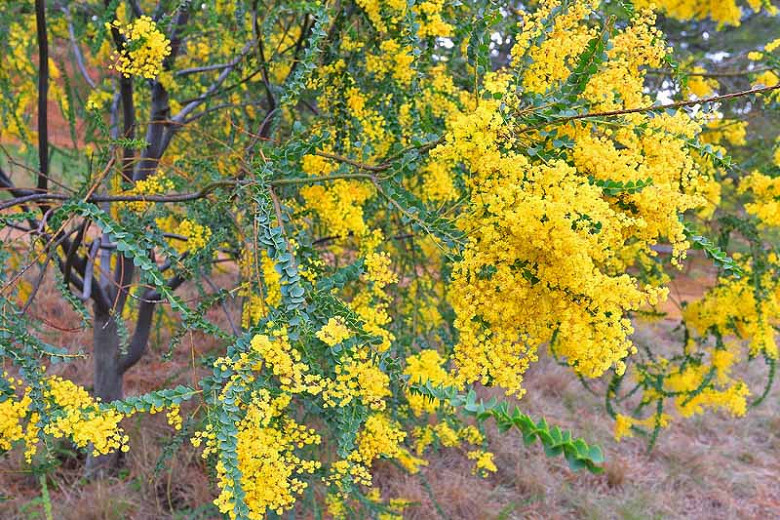Acacia craspedocarpa (Leatherleaf Acacia)
Good-looking, tough and durable, Acacia craspedocarpa (Leatherleaf Acacia) is a dense, upright to rounded, evergreen shrub or small multiple trunk tree with alternate, oval, bluish-green, silver or gray-green leaves. The foliage is rough to the touch, like leather. Blooming profusely in spring and sporadically until fall, bright yellow, puff-like flowers with prominent stamens, strongly attract bees. The blossoms give way to flattened, oblong, markedly veined, green seed pods that ripen to dark brown. They hang in clusters on the tree and open long after they mature. Highly drought tolerant once established, heat loving, cold hardy to 16ºF (-8ºC), and low maintenance, this Western Australia native plant can be used as a barrier, screen, or informal hedge in a landscape. Leatherleaf Acacia is also very tolerant of dry, harsh urban conditions.
- Grows up to 12-15 ft. tall and wide (360-450 cm). Adds 12 in. per year (30 cm). The growth rate and ultimate size of Leatherleaf Acacia depends on irrigation.
- Performs best in full sun in moderately fertile, slightly acidic to very alkaline, well-drained soils. Tolerates light shade in hot desert areas. Drought tolerant once established, but best with occasional watering in dry summers. Moderately tolerant to salt spray.
- This tree is used primarily as a background, screen, or informal hedge plant in water-wise landscapes.
- Very little pruning needed except to give shape.
- Generally trouble-free, but keep an eye out for shot hole borer and root rot. Deer resistant. Fruit pod litter can be significant. If left in place, it will eventually make a nice mulch.
- Propagate by scarified seeds.
- All parts may cause severe discomfort if ingested.
- Native to Western Australia.
Requirements
| Hardiness | 8 – 11 |
|---|---|
| Climate Zones | 8, 9, 12, 13, 14, 15, 16, 17, 18, 19, 20, 21, 22, 23, 24 |
| Plant Type | Shrubs, Trees |
| Plant Family | Acacia |
| Exposure | Full Sun |
| Season of Interest | Spring (Early,Mid,Late)Summer (Early,Mid,Late)Fall |
| Height | 12' – 15' (3.6m – 4.5m) |
| Spread | 12' – 15' (3.6m – 4.5m) |
| Water Needs | Low |
| Maintenance | Low |
| Soil Type | Loam, Sand |
| Soil pH | Alkaline, Neutral |
| Soil Drainage | Well-Drained |
| Characteristics | Showy, Evergreen |
| Native Plants | Australia |
| Tolerance | Deer, Drought, Salt |
| Attracts | Bees |
| Garden Uses | Hedges and Screens, Wall-Side Borders |
| Garden Styles | City and Courtyard, Coastal Garden, Informal and Cottage, Mediterranean Garden |

